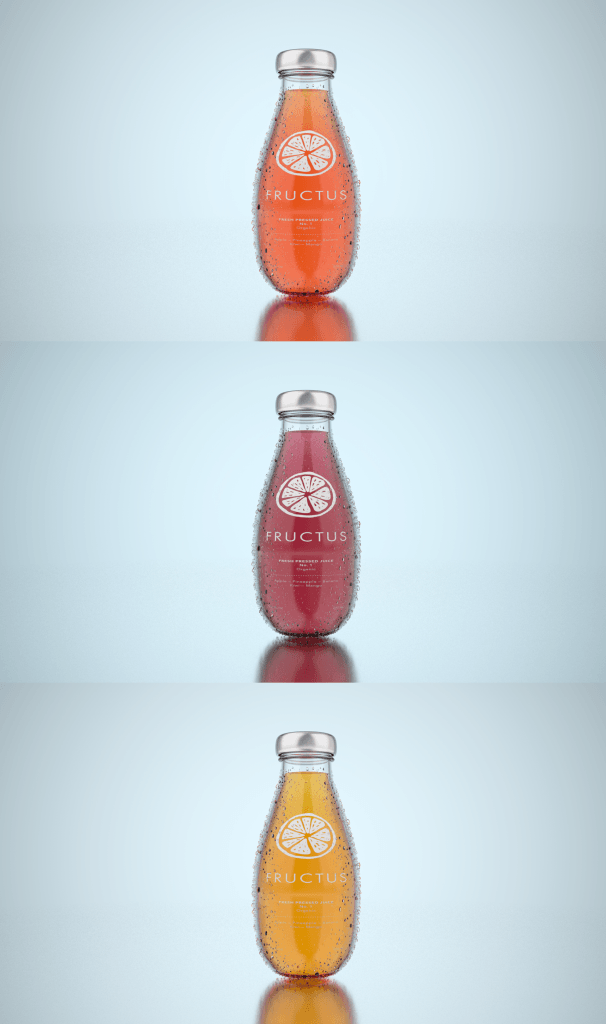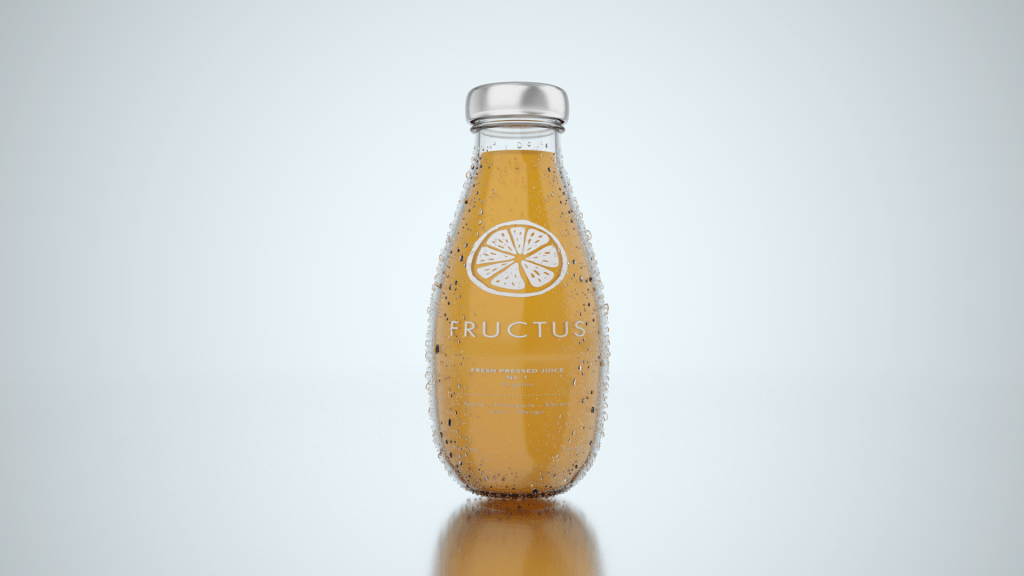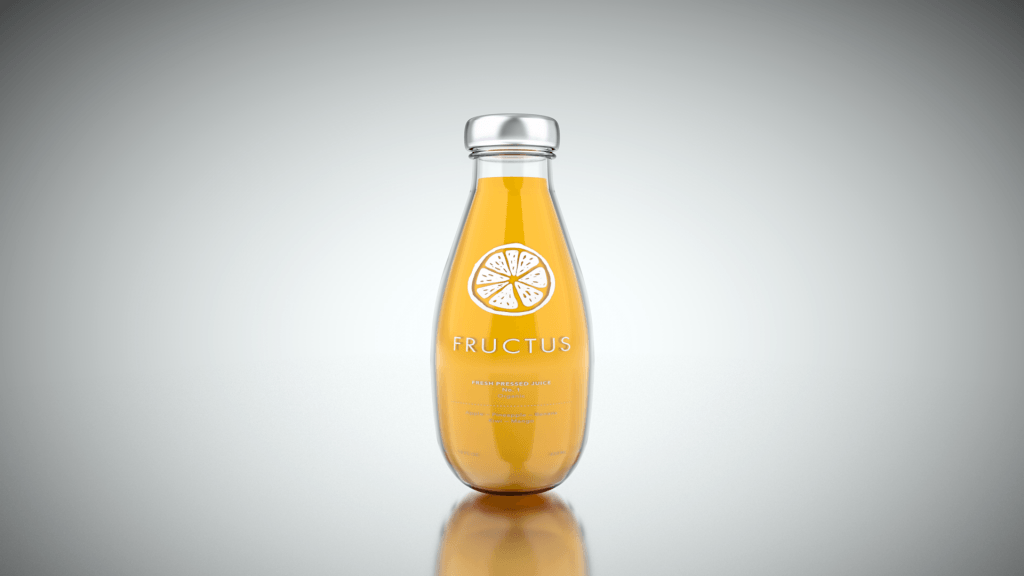Since my last post, I set myself the task of integrating the glass models into the main project file. Within the video below you can see this process taking place, as well as a couple renders to show what the supporting assets look like with the main product.
Within the time-lapse, I demonstrated my workflow by importing the glass models into the main project file and then altering the scale and alignment of them to create a balanced shot through the camera. I then started to create the liquid objects, by using the same method as the Fructus bottle, I copied the inside profile and put this into a Lathe NURBS to create a 3D object. I found this process incredibly easy as I had done it multiple times before with the bottle, the only difficulty I had was creating a dilute version of the liquid texture that looked good. I spent a lot of time altering the colours, absorption distance and strength to make it look realistic, and from the final renders below I feel like I did a good job.
Renders:
Overall, I’m really happy with the way the renders turned out and they look really good, specifically the High Ball & Zombie Glasses (Top Left & Bottom Right).
Like discussed above, I spent a lot of time altering the colours, absorption distance and strength to make it look realistic – because the volume of fluid in the glasses was much greater when compared to the bottled fluid, the overall colour looked much darker, and this really didn’t look good because in real life this wouldn’t have happened unless something was added to it – this was my main motive for wanting to change the liquid colour in the glasses. In addition to the liquid colour inconsistencies, the Hurricane & Martini glasses have a funny visual defect that can be seen at the bottom of the glass – I’m not sure what is causing this, however, It could be the glass material properties and the way in which light refracts inside of the material. Finally, I feel that there is something missing from the render and that it needs an extra model to support it, after looking at pre-existing case-studies, I noticed a common convention where they all use a model of one of the ingredients inside the liquid to act as a prop, I feel like I need to do the same in support the bottle and glass.
Whats Next:
Next, I am going to model some fruit slices to place within the scene, which will further improve it as a whole and will help to unite everything together.




